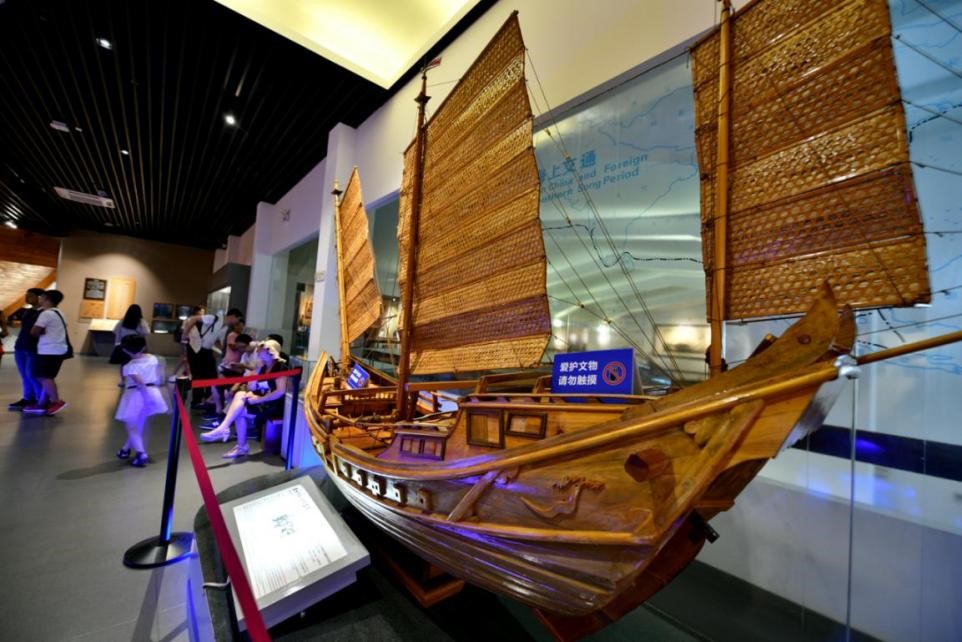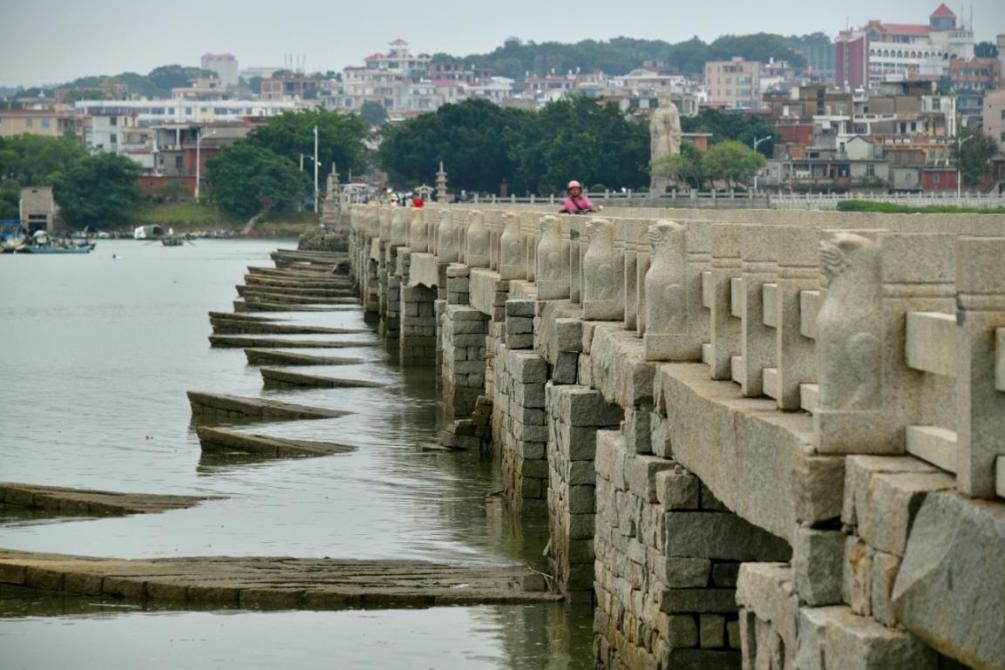China’s Maritime Silk Road port city Quanzhou added to UNESCO World Heritage List

Photo shows a model of an ancient commercial vessel at a museum in Quanzhou, southeast China’s Fujian province. (Photo by Xing Han/ People’s Daily Online)
Historical sites in east China’s port city of Quanzhou won the World Heritage status of the United Nations Educational, Scientific and Cultural Organization (UNESCO) on July 25, bringing the total number of the country’s UNESCO World Heritage sites to 56.
The UNESCO accepted “Quanzhou: Emporium of the World in Song-Yuan China” as a cultural property on its World Heritage List amid the ongoing 44th session of the World Heritage Committee held in Fuzhou, capital of east China’s Fujian province.
The project “Quanzhou: Emporium of the World in Song-Yuan China” reflects the unique and outstanding spatial structure that combined production, transportation and marketing of the port city of Quanzhou during a particular historical period. Comprising 22 functionally and spatially connected historical sites, it demonstrates the key institutional, social and cultural factors that contributed to the spectacular rise and prosperity of Quanzhou as a maritime hub of the East and Southeast Asia trade network during the 10th to 14th centuries AD, said a report by the International Council on Monuments and Sites (ICOMOS), the committee’s official advisory body.

Photo taken on August 3, 2018, shows the Tianhou Temple in Quanzhou, southeast China’s Fujian province, which was originally built in 1196 AD during the Song Dynasty of China to worship the Chinese sea goddess Mazu. (Photo by Luo Xinghan/ People’s Daily Online)
Quanzhou, known as Citong in ancient times, has a history of more than 1,300 years. During the Song and Yuan dynasties in Chinese history, approximately the 10th to 14th centuries AD, Quanzhou thrived in the flourishing international marine trade. Merchant ships that sailed from the Quanzhou Port reached as far as the Gulf of Siam, the Java Sea, the Strait of Malacca, and even the Indian Ocean and the Persian Gulf.
Quanzhou Port, a maritime asset left by ancient Chinese people, has witnessed the advances of the Chinese nation in promoting maritime civilization.
There were mountains of perfume ingredients, gems, precious lumber, gold and silver accessories on the market of Quanzhou; even the Port of Alexandria, the perfume center in the Mediterranean region, registered a perfume trade volume less than one-tenth of that of Quanzhou Port, as depicted by Marco Polo.
During his voyages from 1405 to 1433, which have been hailed as a sailing legend in the East, famous Chinese navigator Zheng He also left footprints in Quanzhou. At the Holy Islamic Tombs of the Lingshan Mountain in Quanzhou stands a stone tablet which shows how Zheng He led a fleet of ships, the world’s largest one back then, to the Persian Gulf.
Quanzhou has greeted envoys and vendors from Southeast Asia, Persia, Arab countries, India, Ceylon, and even the Mediterranean region.
The city is to some extent a natural museum of different religions as it is home to the Tianhou Temple, which worships Chinese sea goddess Mazu, as well as temples, mosques, and churches of various religions including Buddhism, Islam, Hinduism, Manicheism originated in Persia, Nestorianism that has its origins in Syria, as well as Christianity introduced from the Mediterranean region.

Photo taken on August 3, 2018, shows Luoyang Bridge, a masterpiece in ancient bridge building, in Quanzhou, southeast China’s Fujian province. Built in the 11th century during the Song Dynasty, the bridge is 834 meters long and 7 meters wide, and has 46 piers, all made of huge stones. With sturdy structure and artistic appearance, it represents high level of bridge engineering technology and embodies the wisdom of the ancient Chinese people. (Photo by Luo Xinghan/ People’s Daily Online)
Underwater archaeological activities related to numerous shipwrecks have given people a glimpse of the influence of Quanzhou, a window into maritime civilization, in the world’s maritime history.
A shipwreck originally built in the 13th century and discovered at the Houzhu Harbor of Quanzhou in 1973 is so far one of the earliest Fujian-style ocean-going vessels. The ship, with a streamlined design and watertight bulkhead structure, represented a remarkable achievement of ancient China in shipbuilding.
The ship was evidently fully loaded. The cargo discovered in it included a rich variety of perfume ingredients and many kinds of other goods. The perfume ingredients on the ship, which varied from frankincense, agarwood odour, sandalwood scent to logwood, pepper and ambergris, vividly demonstrated the booming trade at the Quanzhou Port, and unrolled a painting about ancient maritime trade network.
As an important city along the ancient Maritime Silk Road, Quanzhou serves as a witness to the friendly exchanges between peoples. It is a unique oriental port city that integrates the charms of the long history, rich culture, and characteristic products of China, an inclusive and wonderous city where civilizations converge, and also a place featuring globally representative maritime cultural heritage before the Age of Discovery.
The UNESCO and the ICOMOS believe that the ancient port of Quanzhou qualifies as a World Heritage site with outstanding value to all mankind.
Photos
Related Stories
- Quanzhou added to UNESCO World Heritage List
- Cultural sites in China, India, Iran, Spain inscribed on UNESCO World Heritage List
- Five cultural sites in Saudi Arabia, Europe inscribed on UNESCO's world heritage list
- Typhoon In-Fa to land in coastal areas of China's Zhejiang, Fujian
- China to hold int'l investment fair in September
Copyright © 2021 People's Daily Online. All Rights Reserved.










